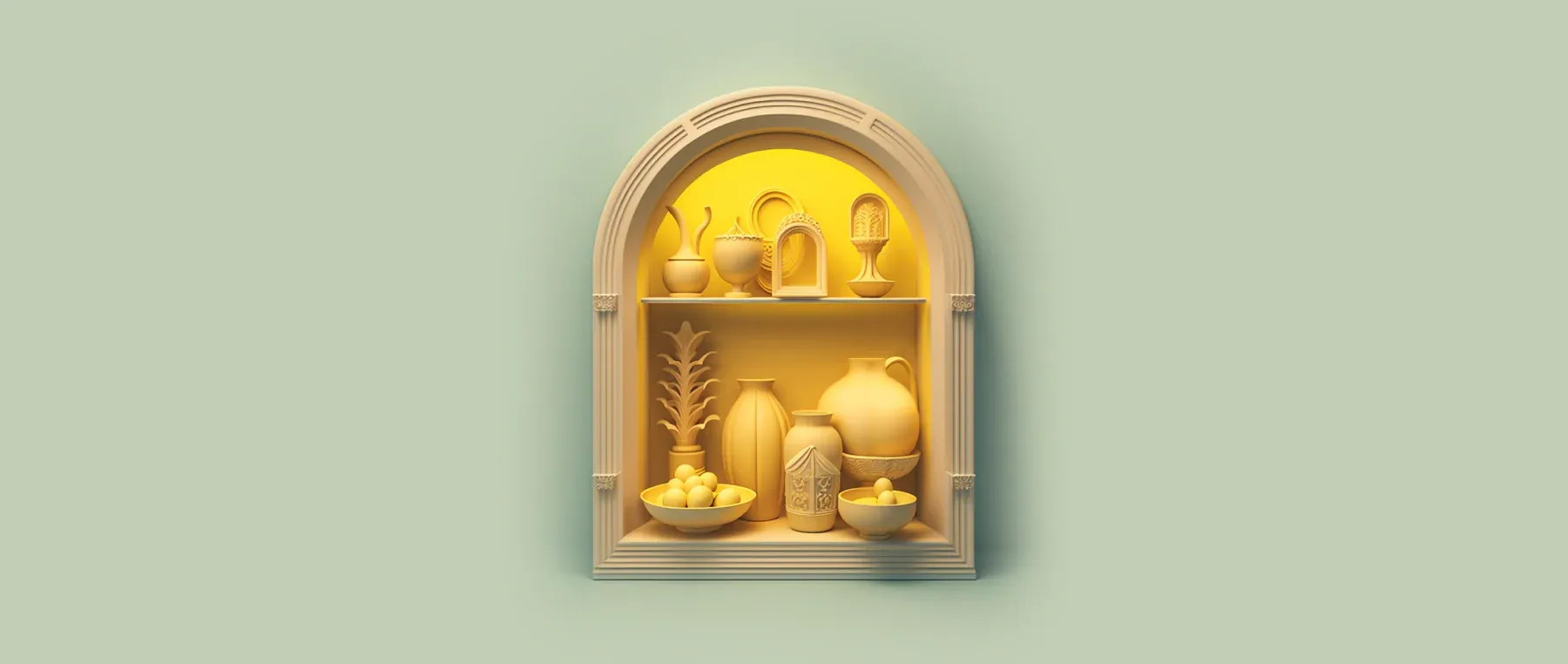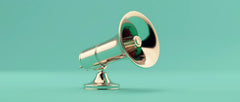
Transforming Retail Spaces: The Art and Strategy of Professional Store Design
Table of Contents
- Key Highlights:
- Introduction
- What is a Retail Designer?
- Why Hiring a Professional Retail Designer is a Good Investment
- What to Look for: Key Skills of a Great Retail Designer
- The Retail Design Process from Start to Finish
- How to Hire a Store Designer
- Moving Forward with a Store Designer
Key Highlights:
- Thoughtful retail design enhances customer experience and drives sales by strategically influencing shopper behavior.
- Hiring a professional retail designer not only leads to increased sales but also leverages their expertise in optimizing store layout, lighting, and merchandising.
- The retail design process involves a collaborative approach that includes consultation, space planning, sourcing materials, and project management, ultimately culminating in an engaging shopping environment.
Introduction
The shopping experience has evolved dramatically over the years, shaped by changes in consumer preferences, advances in technology, and the growing importance of brand storytelling. As a result, the design of physical retail spaces has emerged as a critical factor that influences customer behavior and satisfaction. Thoughtful store design serves not just as an aesthetic choice; it's an integral part of a retailer's strategy to convert casual visitors into loyal customers. A well-designed retail space can turn a simple stop into a memorable experience, characterized by the right balance of functionality, aesthetics, and brand essence.
Professional retail designers play a pivotal role in this transformative process. By translating a brand’s personality into compelling physical environments, they strategically design store layouts, curate materials and lighting, and carefully orchestrate product displays. This article delves deeper into what retail designers do, the benefits of hiring them, the skills to look for when selecting the right designer, and the comprehensive design process they follow.
What is a Retail Designer?
A retail designer is a multifaceted professional who combines strategic insight with creative flair to craft retail environments that engage customers from the moment they glance at the storefront to the final checkout experience. Their responsibilities span a wide array of elements that contribute to an appealing retail environment.
Key Responsibilities of Retail Designers
-
Spatial Zoning: Retail designers assess the store layout to identify high-margin hotspots and optimal browsing areas. By mapping out traffic patterns, they ensure customers can easily navigate the space while being encouraged to explore.
-
Material and Light Curation: This role involves selecting finishes, fixtures, and color schemes that compliment the merchandise while enhancing visual appeal. Effective lighting can create ambiance and highlight key products.
-
Visual Merchandising: Retail designers excel at staging products, signage, and media displays. They create a compelling narrative that guides customers through the shopping journey, making the experience cohesive and memorable.
While some retail designers might advise on structural renovations, their main focus is on creating inclusive and effective merchandising environments within the store's confines. Their expertise is critical in converting foot traffic into tangible sales.
Why Hiring a Professional Retail Designer is a Good Investment
Investing in a retail designer can yield significant returns in multiple aspects. Here are some compelling reasons to consider:
Increased Sales
Strategic layout modifications can result in higher dwell times and larger basket sizes. Successful retailers often see substantial revenue boosts following redesign initiatives. For instance, Dollar General’s ambitious Project Elevate, aimed at remodeling stores to generate a 3% to 5% increase in first-year comparable sales, exemplifies how targeted redesign can drive profitability.
Enhanced Merchandising Value
Retail designers possess the know-how to create story-driven product zones and eye-catching displays that encapsulate the brand narrative. They designate focus to the most profitable items, turning them into the stars of the shopping journey.
Better Lighting Techniques
Using advanced lighting strategies, retail designers leverage the color rendering index (CRI) and temperature to effectively spotlight products. The right approach enhances product visibility while fostering the desired shopper atmosphere.
Valuable Networks
Retail designers often maintain strong partnerships with suppliers, which can be advantageous for obtaining discounts, exclusive resources, and materials that may not be accessible to the general public.
Creating the “Wow” Factor
Creating captivating environments that draw customers in is key to driving offline sales, much like online branding. A designer brings creativity to the forefront, ensuring the space stands out and optimizes for conversion.
What to Look for: Key Skills of a Great Retail Designer
Hard Skills
-
3D CAD/BIM Proficiency: Competency in drafting detailed floor plans and creating photorealistic renders, which streamline execution.
-
Space Planning: Expertise in laying out traffic flow, sightlines, and fixture placements to enhance product visibility and customer interaction.
-
Lighting Design: Mastery in choosing appropriate lighting solutions that influence shopping mood and showcase products appealingly.
-
Material Knowledge: Understanding of materials and finishes that balance aesthetics with durability and brand identity.
-
Building Code Literacy: Awareness of accessibility, fire safety, and energy standards that prevent costly setbacks during the design process.
Soft Skills
-
Clear Communication: Ability to articulate design concepts, project scopes, and budgets in relatable terms for all stakeholders.
-
Cross-team Collaboration: Working effectively with merchandising, marketing, and installation teams to ensure cohesive execution.
-
Creative Problem-solving: Flexibility in adjusting layouts in response to unexpected challenges, thereby turning potential setbacks into opportunities.
-
Storytelling: Crafting visual narratives that communicate brand values and resonate with customers.
-
Negotiation: Utilizing vendor relationships to secure favorable terms for materials and fixtures.
The Retail Design Process from Start to Finish
The journey of transforming a retail space involves several distinct phases, each contributing to a seamless end result. Collaborating with a proficient designer can simplify this process significantly.
1. Consultation and Concept Development
The process begins with a discovery call, where the designer engages with the retailer to understand their vision, target demographic, and pain points. This can take place in-store or via video conferencing, laying the groundwork for a successful working relationship. Following mutual agreement, the designer conducts a site walkthrough, which involves:
- Measuring the space to optimize traffic flow.
- Understanding brand elements such as colors, fonts, and narrative themes.
- Developing a mood board that encapsulates material preferences and color palettes.
- Crafting an initial floor plan that designates zones and identifies major fixtures.
- Producing a cost estimate that aligns with the proposed vision.
2. Schematic Design and Space Planning
Once the budget is approved, the designer focuses on space planning by dividing the retail area into zones based on a planogram. This approach ensures that customers engage with key products strategically. During this phase, they sketch potential layouts, considering customer flow and building codes to avoid redesign hurdles later on.
Every square foot of the retail space must contribute to sales, which is a key focus for designers during this phase.
3. Sourcing Fixtures, Furniture, and Materials
Retail designers often come equipped with extensive networks of suppliers, enabling them to find the best materials and fixtures within budget constraints. They may:
- Commission prototypes for key fixtures.
- Consult on selecting sustainable options, balancing aesthetics with environmental responsibility.
- Develop timelines that ensure all components arrive on schedule for a smooth installation.
4. Project Management and Installation
With a clear design in place, designers facilitate the execution by coordinating teams of electricians, carpenters, and installers. They oversee deliveries and inspections, ensuring that each detail aligns with the vision. If any installation issues arise, designers promptly address them to maintain timelines.
On opening day, retail designers may hover around the store, adjusting product placements and signage in real-time to optimize customer flow and enhance the launch experience.
How to Hire a Store Designer
Finding the right store designer involves careful consideration and an organized approach.
Ask Around
Leverage word-of-mouth referrals by consulting colleagues, friends, and industry contacts. If you have a particular design in mind, don’t hesitate to ask other store owners who managed their own retail design successfully.
- Key questions include:
- Would you hire them again?
- How did their work perform regarding timeline and budget?
- Was there a noticeable impact on sales or foot traffic post-redesign?
Look Online
Using Google and freelance platforms can expand your options significantly. Websites like Fiverr and Upwork can connect you with designers, but also consider design communities to find professionals specializing in retail.
- American Society of Interior Designers (ASID): A professional association showcasing designers across the US.
- Interior Designers of Canada (IDC): An advocacy group connecting you with qualified designers in Canada.
- Houzz: A resource for discovering design professionals suitable for various project types, including retail.
Define Your Vision
Before meeting potential designers, compile a clear vision of your desired store design. Creating a concise brief will help communicate essential details:
- Target shopper demographics and brand attributes.
- Square footage, must-have showcased products, and budget constraints.
- Expected completion dates for the layout and installation.
Creating a Pinterest board for visual inspiration can also facilitate this process.
Interview Several Candidates
Review the portfolios of potential designers, focusing on relevant projects. Use the interview to gain insights into their process, timelines, and fee structures. Request references to talk with past clients about their experiences.
Create a Clear and Detailed Contract
Once a designer is selected, establishing a contract is essential. This document should outline all terms, expectations, and payment processes to safeguard all parties involved in the project.
Moving Forward with a Store Designer
With contracts finalized and expectations set, the journey toward creating a captivating retail environment begins. Dedicated retail designers have the expertise to bring a retailer’s vision to life, creating stores that not only attract attention but also foster strong customer relationships through meaningful shopping experiences. A beautifully designed retail space can serve as a platform for showcasing your brand and products while compelling potential customers to step inside and engage.
FAQ
What is the role of a retail designer?
A retail designer is a professional who specializes in creating engaging and effective retail environments. They focus on various elements including space planning, lighting, merchandising, and overall aesthetic to enhance the shopping experience and drive sales.
How can retail design influence sales?
Effective retail design can influence consumer behavior by guiding traffic flow, creating compelling visual storytelling, optimizing product placement, and enhancing the overall shopping environment. This can lead to increased dwell times and larger basket sizes, ultimately resulting in higher sales.
Why should I hire a professional designer instead of doing it myself?
While DIY design might seem cost-effective, a professional retail designer brings specialized expertise that elevates the space’s aesthetic and functional value. They have the training, resources, and industry connections to create a store that maximizes sales potential and customer satisfaction.
How do I know if a retail designer is right for my project?
Assessing compatibility involves reviewing their portfolio, asking for references, and discussing their design philosophy in relation to your vision. Comfort and clear communication with a designer will set the tone for a successful partnership.
What should I expect in terms of costs for hiring a retail designer?
Costs vary based on the complexity of the project, the designer’s experience, and the scope of services required. It is advisable to set a clear budget upfront and discuss it with designers during consultations to ensure alignment.
The era of generic retail is long over; the future belongs to spaces that engage and inspire. By leveraging the expertise of professional retail designers, businesses can create unforgettable experiences that resonate with customers long after their visit.
POWER your ecommerce with our weekly insights and updates!
Stay aligned on what's happening in the commerce world
Email Address
Handpicked for You

08 September 2025 / Blog
How to Avoid Greenwashing: Rules, Real-World Examples, and a Practical Playbook for Honest Environmental Claims
Read more
08 September 2025 / Blog
Klaviyo 2025: How its AI-Driven CRM Transforms Shopify Email Marketing and the Customer Experience
Read more
08 September 2025 / Blog


